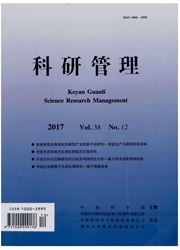

 中文摘要:
中文摘要:
贸易的二元边际一直是国际贸易研究的热点问题,大多数文献旨在描述二元边际的特征事实,但对于两种边际究竟何者更好的问题却缺乏比较的标准。本文立足于进口贸易,采用“福利”作为判断二元边际何者更好的依据,并利用1995-2009年CEII-BACI的HS-6位国际贸易数据,估算了17个国家的进口二元边际及进口福利,对两者的相关关系进行了实证分析。文章发现,扩展边际能够既促进进口的种类福利又促进进口的数量福利,而集约边际对进口福利的影响并不显著。除此以外,本文还发现一国进口总量能够正向促进进口福利,个人消费水平能够负向影响进口的种类福利以及数量福利。
 英文摘要:
英文摘要:
The dual-margin of trade has always been a hot issue in the international trade research.Most of theliteratures focus on the stylized facts of the dual-margin,but lack of criteria on the problem which margin is better.Based on the import trade,regarding the import welfare as standard and using the HS-6international trade data in1995-2009,this paper estimates the dual-margin and the welfare of import from17countries and describes the stylized factsof the dual-margin and the welfare of import.We find that extensive margin promotes the import welfare but intensivemargin has no obviously impact on the welfare.Furthermore,we find the conclusions such as total volume of onecountry’s trade had promoted the import welfare,and the individual’s consume level can negatively influent the varietyand quantity welfare.
 同期刊论文项目
同期刊论文项目
 同项目期刊论文
同项目期刊论文
 期刊信息
期刊信息
